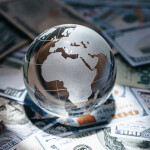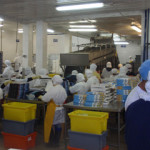One of China’s key aquaculture regions is experiencing its worst drought in 50 years and water experts are predicting straitened times ahead for water-dependent industries like aquaculture and fisheries, threatening China’s ability to increase output.
Home to the key processing/export hub of Dalian, Liaoning is one of what’s termed China’s “dry 11” provinces by Feng Hu, head of research at China Water Risk, a non-profit body researching the extent of China’s water shortage and pollution problems. He said the current water shortages in Liaoning will “inevitably” hurt production volumes of agriculture and seafood this year.
China will face an inflection point in 2030 when demand for water will outstrip supply, said Feng. Maps compiled by his organization show a dramatic worsening of the water supply situation between 2000 and 2010, with urbanization, industry and demand for power all contributing to the erosion of water bases like streams, rivers and lakes across the country.
The Chinese government’s plan to solve the crisis rests on “three Ds” — dams, desalination and diversion. A giant pipeline channeling water from wetter south China to northern regions posits problems, said Feng, “given that some of the water being diverted is coming from already fragile water and ecosystems.”
Government has also stepped up efforts to cope by issuing civic guides on use of water while also rolling out a system of fines for industries over-using or polluting water bases. But Feng thinks the main solutions may rest in more efficient use of water in agriculture (including aquaculture) while also increasing the price of water two to four fold in cities like Beijing.
The challenge is truly enormous — China’s top four producing regions for beef now feed more cattle than key beef producer Australia. Plans at the local-government level to expand this further will put massive pressure on freshwater sources. Given 98 percent of China’s energy is water reliant, the ramp up in electricity generation to meet demand (China will increase electricity generation from 0.97 terrawatts (TW) now to 4.75TW in 2050 if it follows U.S. economic models (and 2.47TW if it becomes more energy-efficient than the U.S.): this will require enormous amounts of water.
Meanwhile there is some hope in reducing water use by improving efficiency of industry here, which is up to four times more wasteful in water use terms than peer industries in Japan and the EU.
Economists and environmentalists in the greater China region argue that the prices of seafood and other commodities shipped from China to western markets would be far greater if they reflected the cost in water shortages and pollution in China. The current model of outsourcing seafood processing to China means “products get cheaper but cost of inputs continues to go up, because true costs are externalized,” said Chandran Nair, founder of the Global Institute for Tomorrow, a Hong Kong based think-tank.






